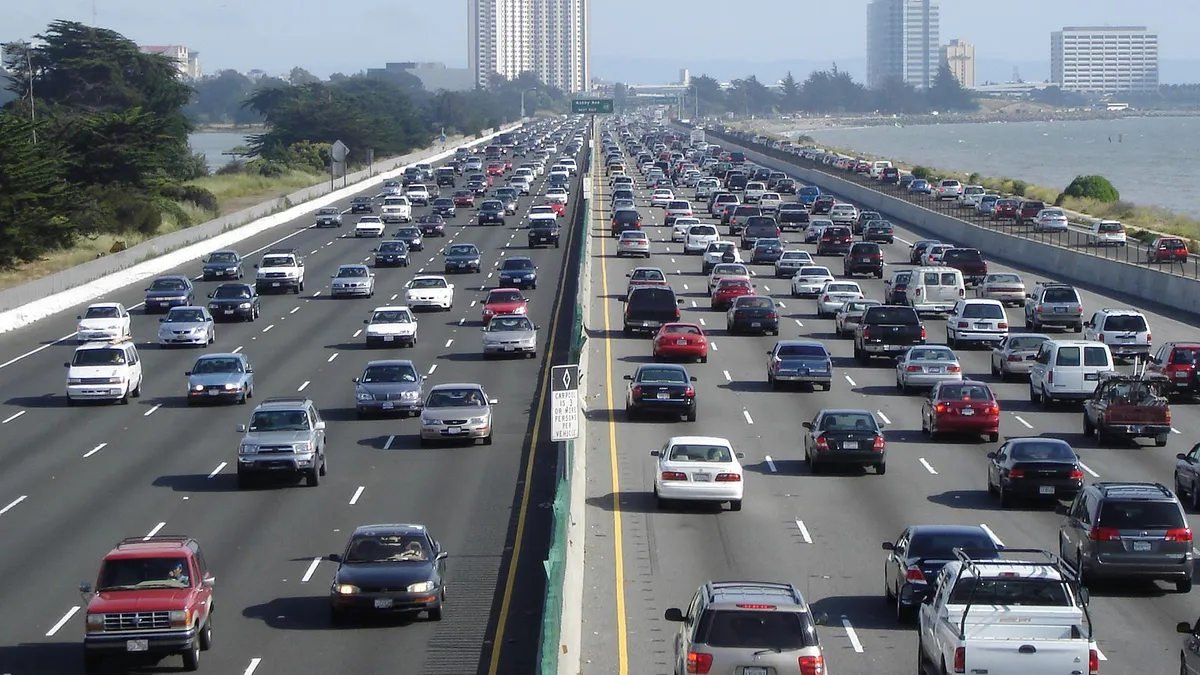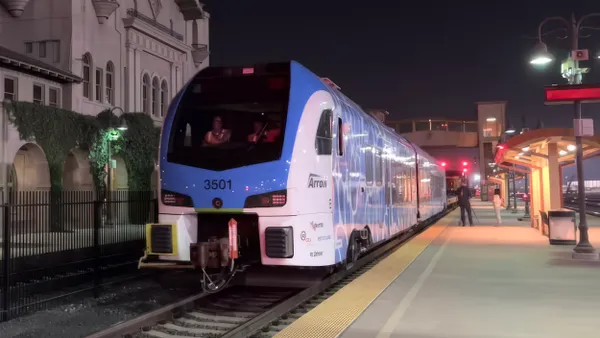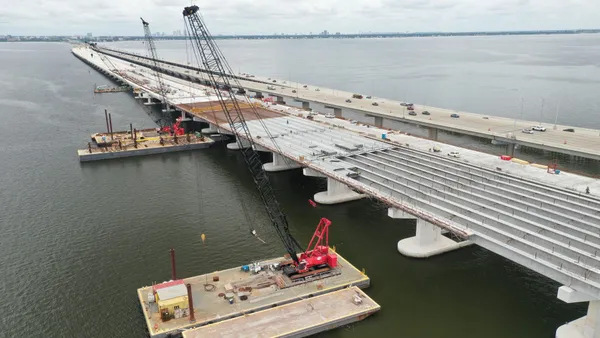Dive Brief:
- The Los Angeles Metropolitan Transit Authority is soliciting proposals for a "MicroTransit" Pilot (MTP) to complement its existing Metro bus and rail service. The city is seeking a partnership for designing, building and testing the new system.
- Rather than using traditional transit vehicles, the MTP will rely on smaller shuttles, such as vans, designed for trips under 20 minutes in duration.
- The new system is to incorporate a demand-responsive technology platform. Unlike a bus, it will use a navigation system to respond to real-time traffic conditions and customer pick-up and drop-off requests within certain zones, emulating ride-share services like Uber and Lyft.
Dive Insight:
Los Angeles is often viewed as the pinnacle of traffic headaches and regularly tops lists of the most congested cities. Residents have a reputation for being vehicle-dependent and taking a lot of single-occupant car rides, and also for not riding their subway. In fact, the city's rail ridership continues to steadily decline from its already low numbers.
The new MicroTransit plan is an effort to get L.A. residents out of their cars and into shared transportation options by incorporating more modern concepts. It offers greater convenience by abandoning fixed routes and it is expected to have a lower per-ride cost than a traditional ride-share. It could offer a happy medium for Angelenos who wish to cut down on single-rider car trips but don't want to use traditional fixed-route public transit.
MTP will provide better transportation coverage for residents that aren't close to a bus stop or rail station. No service zone has been identified yet; the expectation is for proposals to include an analysis of at least six possible service zones, and the pilot would be carried out in at least one of those.
In addition to easing traffic congestion, fewer vehicles on the roads means fewer emissions, which is also a huge problem in Los Angeles. Southern California has had a long problem with smog, and although it's not quite as bad as it used to be, the problem was exacerbated by heat waves this year. Los Angeles, in particular, is a pollution trap due to its position near mountains and temperature inversions that hold polluted air over the city.
Like the recent partnership between Phoenix and Lyft, the MicroTransit project acknowledges changes in modern transportation. It embraces the trend toward ride-sharing and away from traditional public transit rather than fighting it. That makes the system more in-line with what customers desire, which has the potential to boost ridership.











